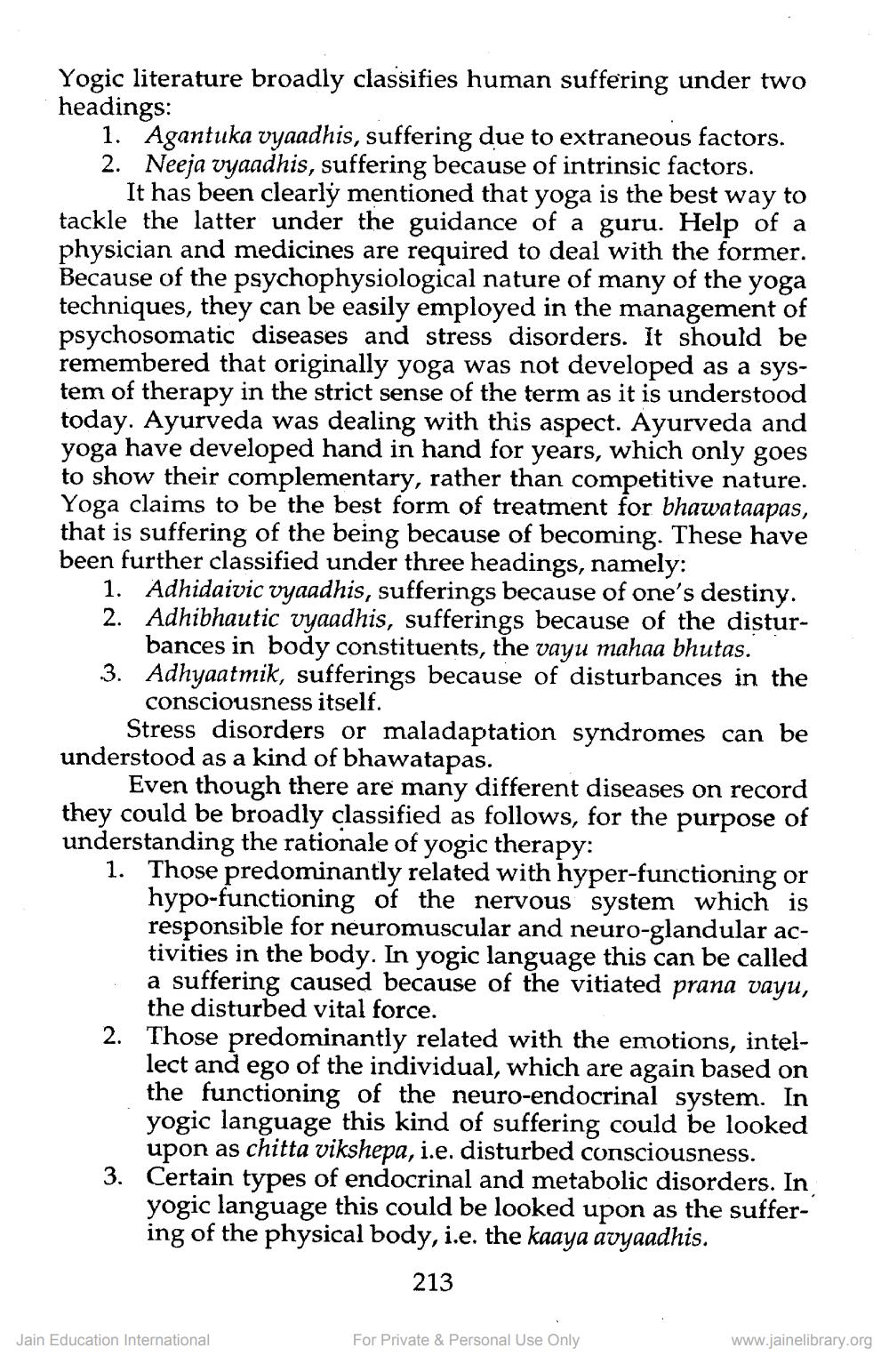________________
Yogic literature broadly classifies human suffering under two headings:
1. Agantuka vyaadhis, suffering due to extraneous factors. 2. Neeja vyaadhis, suffering because of intrinsic factors.
It has been clearly mentioned that yoga is the best way to tackle the latter under the guidance of a guru. Help of a physician and medicines are required to deal with the former. Because of the psychophysiological nature of many of the yoga techniques, they can be easily employed in the management of psychosomatic diseases and stress disorders. It should be remembered that originally yoga was not developed as a system of therapy in the strict sense of the term as it is understood today. Ayurveda was dealing with this aspect. Ayurveda and yoga have developed hand in hand for years, which only goes to show their complementary, rather than competitive nature. Yoga claims to be the best form of treatment for bhawataapas, that is suffering of the being because of becoming. These have been further classified under three headings, namely:
1. Adhidaivic vyaadhis, sufferings because of one's destiny. 2. Adhibhautic vyaadhis, sufferings because of the disturbances in body constituents, the vayu mahaa bhutas. 3. Adhyaatmik, sufferings because of disturbances in the consciousness itself.
Stress disorders or maladaptation syndromes can be understood as a kind of bhawatapas.
Even though there are many different diseases on record they could be broadly classified as follows, for the purpose of understanding the rationale of yogic therapy:
1. Those predominantly related with hyper-functioning or hypo-functioning of the nervous system which is responsible for neuromuscular and neuro-glandular activities in the body. In yogic language this can be called a suffering caused because of the vitiated prana vayu, the disturbed vital force.
2. Those predominantly related with the emotions, intellect and ego of the individual, which are again based on the functioning of the neuro-endocrinal system. In yogic language this kind of suffering could be looked upon as chitta vikshepa, i.e. disturbed consciousness. 3. Certain types of endocrinal and metabolic disorders. In yogic language this could be looked upon as the suffering of the physical body, i.e. the kaaya avyaadhis.
213
Jain Education International
For Private & Personal Use Only
www.jainelibrary.org




